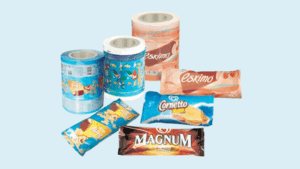Last Updated on April 18, 2025 by Packoi Team
While many assume paper is the greener choice, the reality is more nuanced. Factors like production energy, water usage, transportation emissions, and recyclability all play a role in determining which bag is truly more sustainable.
Understanding these trade-offs is key for businesses aiming to make informed, eco-conscious decisions that align with both environmental values and operational needs. In this article, we explore the basics of paper and plastic bags, their environmental impact, cost, and usability for your business.
History of Paper and Plastic Bags
Believe it or not, there was a time when grocery stores didn’t have paper or plastic bags. Before the 1800s, people were expected to simply carry their goods in their hands. Rich people would often carry fancy baskets or canvas bags to the stores.
How the First Paper Bag Was Invented?
During the 19th century, paper production was starting to ramp up, and the material was more readily available to everyone. Butchers were the first to utilize paper as a packaging material. They would wrap fresh-cut meat in brown paper (white paper was incredibly expensive at the time)before handing it to the customer.
In the 1850s, Francis Wolle folded brown paper into an envelope shape, creating the first-ever commercial paper bag. While the invention was a game-changer for the average blue-collar Joe, it left much to be desired. Wolle’s paper bags were lightweight and unable to withstand the weight of larger items.
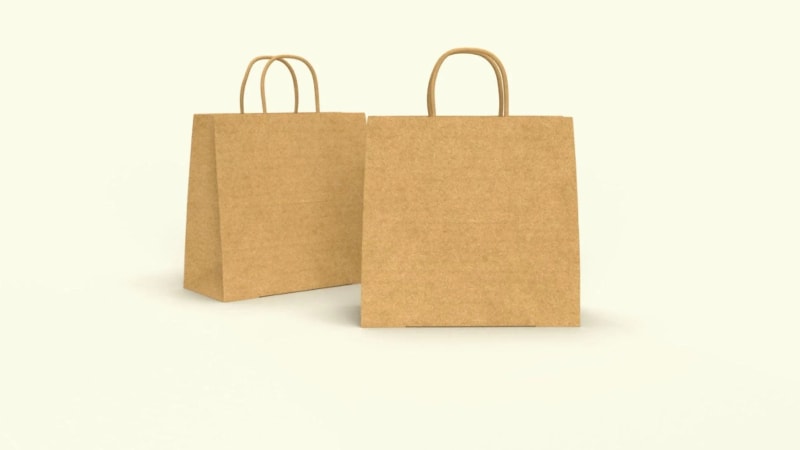
Twenty years later, Margaret Knight, a worker at the Columbia Paper Bag Company, designed a paper folding machine that made flat bags that could be unfolded when required. The new paper bags had a reinforced flat bottom, increasing durability and carrying capacity. Margaret was also the woman who received an American patent for her invention.
How the First Paper Bag Was Invented?
Plastic has been around for over a hundred years, first synthesized by Leo Baekeland in 1907. While plastic was an exciting new material, it could only be produced in a lab with expensive equipment.
Later, in 1933, two chemists working for the Imperial Chemical Industries Research Laboratory in England accidentally created polyethylene. This form of plastic was much more cost-effective to produce.
However, it took another 30 years before anyone thought it could be used as a carrying device. In 1965, a Swedish engineer, Sten Gustaf Thulin, invented and patented the first plastic bag. It was a low-cost item that quickly replaced cloth bags across Europe.
Ready to Get Custom Packaging for Your Business?
start with a low minimum order quantity
After its success in Europe, companies worldwide started marketing plastic bags as a more convenient way to shop. By the 1980s, a century after the invention of the paper bag, plastic bags had completely replaced their paper predecessors. Today, the environmental damage caused by plastic bags has led to stores switching back to paper bags.
Everything You Need to Know About Paper Bags
We have already covered the history of the humble paper bag; now let’s discuss its role in our modern society. Firstly, modern paper bags are made from Kraft paper, which was named after the Kraft process used to convert wood into wood pulp.
Kraft paper bags have a distinct brown color from the wood pulp and are available in different thicknesses. Sack paper is a porous variety of Kraft paper with greater elastic strength and tear resistance, making it ideal for heavy-duty applications.
Advantages
- Biodegradable and decompose naturally.
- Made from renewable resources (tree fibers).
- Recyclable. Many modern paper bags are made from recycled materials.
- Sturdy and suitable for heavy loads.
- Extensive customization options (color paper, full-color printing, embossing, etc.)
- Better visual appeal. Excellent for establishing a brand identity.
Disadvantages
- Can tear easily, especially when wet.
- Paper bag production requires more resources (water, trees, and energy).
- Slightly higher cost than plastic bags. (Although unbleached paper bags are more cost-effective than bleached bags.)
Everything You Need to Know About Plastic Bags
Conventional plastic is made from the polymerization of ethane and propane gas (refined from crude oil). Polyethylene, invented in 1933, has been the go-to material for plastic bag production. The strength of the plastic bag is determined by the type of polyethylene used.
- High-density polyethylene (HDPE) results in stronger and heavier plastic bags.
- Low-density polyethylene (LDPE) results in lightweight buses and less durable bags.
- Linear low-density polyethylene (LLDPE) results in a semi-strong bag with a shiny finish.
Regardless of the material choice, the manufacturing process remains the same. Plastic pellets are melted into a thin liquid film. A blower pumps air through the mixture, producing a thin plastic cylinder. The cylinder is folded and cut into the desired size.

Advantages:
- More durable than paper and water resistant.
- Much lower per-bag cost.
- It can be reused as a storage device or repurposed as a trash bag.
Disadvantages:
- Made from non-renewable resources (petroleum).
- Non-biodegradable. Plastic can take up to 1,000 years to fully decompose.
- Difficult to Recycle. HDPE can only be recycled 10 times.
- A significant contributor to pollution and marine litter.
- Microplastics can leach into food.
- Harmful to wildlife, especially marine ecosystems, as discarded plastic ends up in water bodies.
Environmental Impact of Paper & Plastic Bags
Speaking of environmental impact, let’s break down the damage plastic and paper bags do to our surroundings. While you may think plastic is obviously much worse, the real answer is a bit more complicated.
Are Paper Bags Better for the Environment?
The raw materials used in paper bag production and the manufacturing process leave a heavy impact on the environment. Paper is made from wood pulp, which is a renewable resource, but only when harvested ethically.
Many wood harvesters cut down trees for paper production but don’t plant new ones, resulting in deforestation. The entire process of converting trees into wood pulp and then processing pulp into paper is already energy-intensive. Folding and gluing flat paper into paper bags requires additional resources.
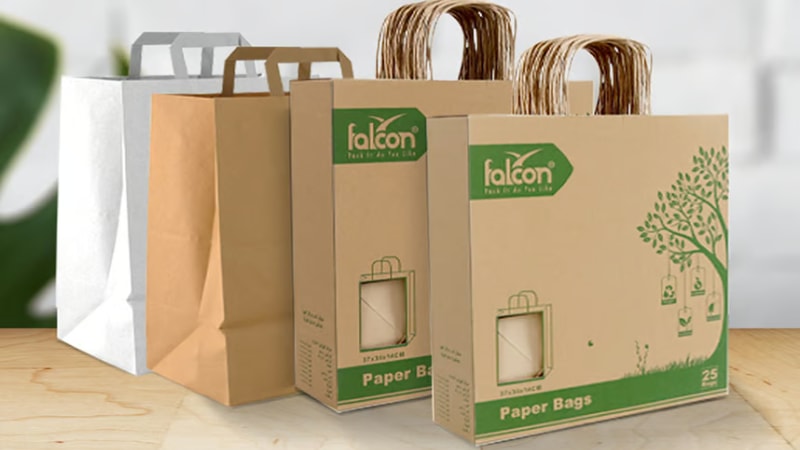
Every step of the manufacturing process, from cutting wood to folding paper, utilizes heavy machinery running on fossil fuels or electricity. Additionally, the wood-to-pulp conversion consumes a lot of water, which can destroy local water reservoirs.
You may think that once manufactured paper bags have a minimal environmental impact, and the recycling process is also more reliable. However, there is a small caveat here as well. Paper bags are one-time-use solutions; they tear and degrade quickly and are rarely ever reused.
Could Plastic Bags be Better for the Environment?
While it may be shocking to hear that plastic bags are actually better for the environment as long as they are recycled, plastic is made from the polymerization of propane and ethane gas, which consumes a lot of energy.
However, the amount of plastic required to make one bag is minuscule. Plastic bags are 6-10 times lighter than paper bags. So, it takes considerably fewer raw materials to produce plastic bags.
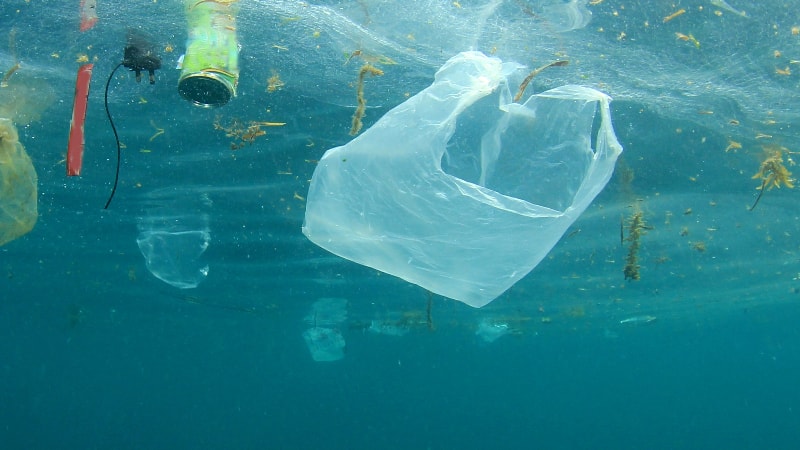
In fact, the overall impact of paper bag manufacturing results in 3-4 times more CO2 production than plastic bags. But the story doesn’t end here. Plastic bags are often reused and repurposed, so if we calculate the environmental impact by use, we get an even bigger gap.
Single-use plastic bags are 3-4 times more energy efficient than paper bags. But if you reuse your plastic bag at least once, it makes it 6-8 times more energy efficient.
The real problem arises when these plastic bags are discarded. As low-cost items, recycling plastic bags is not economical. It’s more cost-effective for the manufacturers to buy new plastic for bag production.
So, most plastic bags ever manufactured end up in landfills or the ocean. Globally, we produce over 400 million tons of plastic annually, and over 1 million tons of plastic end up in the ocean. Plastic pollution damages wildlife by disturbing their ecosystems.
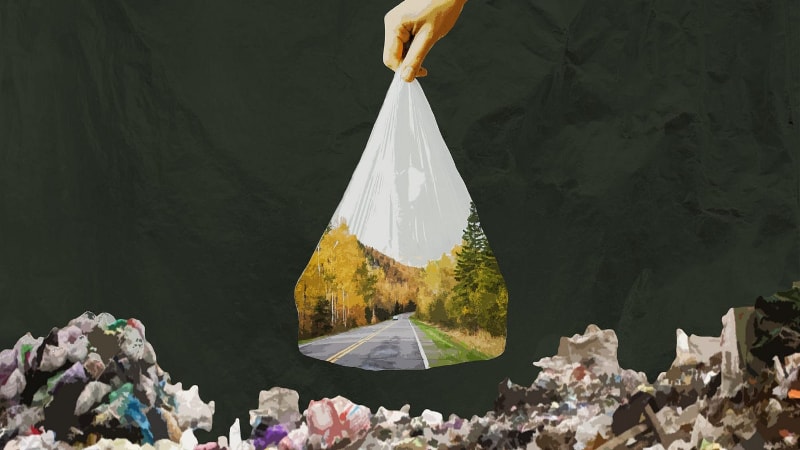
Most of the remaining plastic bags end up collecting in the streets, roads, gutters, and forests. Plastic particles can leach into and pollute the oil.
So, the biggest environmental impact of plastic packaging and bags comes after the manufacturing process. Plastic bags are bad for the environment because they take a very long time to degrade, and industries refuse to recycle plastic waste.
Are Cloth Bags the Better Option?
While reading this article, many of you may have already thought of a better solution – reusable bags. So, let’s take a moment to analyze the pros and cons of using reusable shopping bags.
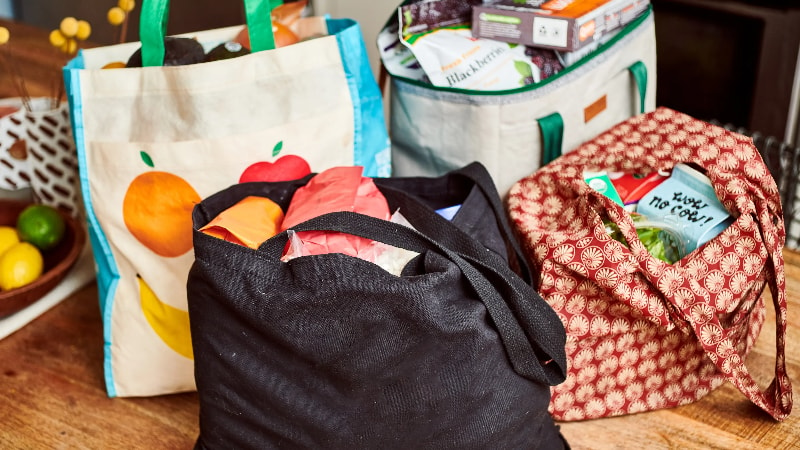
First, we need to be clear about the material of reusable grocery shopping bags. Organic cotton bags are better than polyester bags, which are just plastic. Next, we need to consider the energy required to manufacture reusable bags.
Reusable cotton bags are bigger, use more material, require additional processing like stitching, and consume more energy to transport. These cotton bags are in the same boat as paper bags. They have a bigger carbon footprint than plastic bags.
However, unlike paper bags, cotton bags can be reused multiple times. Studies show that a cotton bag produces 200 times more carbon emissions than a plastic bag. So, for the lowest environmental toll, cotton bags must be used more than 200 times more than plastic bags.
Since a plastic bag can be reused at least once, consumers must use the same cotton bag for over a year to justify their initial carbon footprint.
Which is Better for the Environment: Paper, Plastic, or Reusable Bags?

There isn’t a simple yes or no answer to this question. The true impact of either material depends on the material sourcing and responsible usage.
| Aspect | Paper Bags | Plastic Bags | Cotton Bags |
|---|---|---|---|
| Initial Cost | Low | Lowest | High |
| Water Resistance | Poor | Excellent | Good |
| Decomposition Time | Weeks to months | 500–1,000 years | Weeks to months |
| Production Energy Use | High | Lower | High |
| Greenhouse Gas Emissions | Higher (if not reused) | Lower | Higher (if not reused) |
| Recyclability | Widely recyclable | Less recyclable (contamination) | Recyclable |
| Impact on Wildlife | Minimal | Significant | Negligible |
Paper bags are more environmentally friendly due to their biodegradability and recyclability. However, it should be followed up with more ethical tree harvesting and renewable energy use for the manufacturing processes.
Plastic bags would be better for the environment if we reused plastic bags as much as possible and if the plastic industry committed to recycling plastic bags as much as possible. Reusable bags (cotton) are better for the environment if used for over a year.
Paper vs Plastic: Which One Should You Buy?
From a consumer perspective, the paper vs. plastic debate all comes down to usability. Cotton shopping bags are the best if you can use them regularly. So let’s discuss the business angel. As a business, your two main options are paper or plastic.
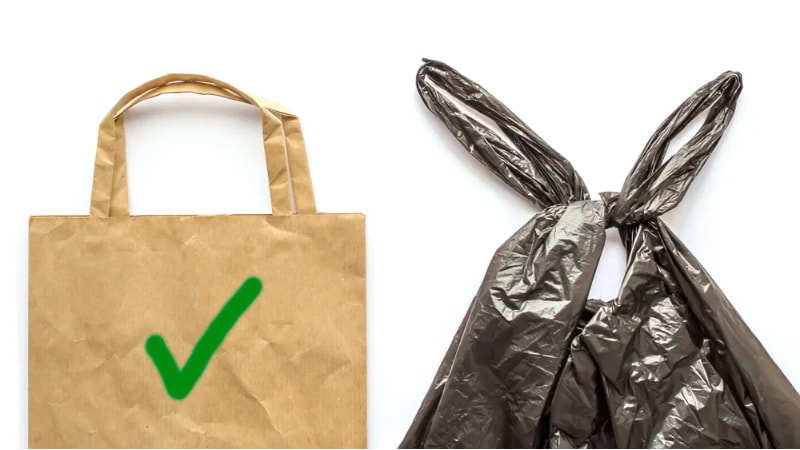
So, let’s discuss six factors that will help you decide the right choice for your business.
1. Durability & Reusability
From a business perspective, durability is a necessity. Customers should be able to rely on your shopping bags, which must withstand the weight of the goods and the occasional jerk and jolt in transit.
Whether you choose paper or plastic, a reasonable material thickness should be considered for optimal performance. Paper bags are generally less reusable as they can easily tear. With plastic and cotton, customers at least have the option of reusing.
2. Cost Comparison
The cost analysis is simple. Plastic bags are 4-5 times more cost-efficient than paper bags. Businesses can invest those savings in other value additions, such as custom printing on the bags.
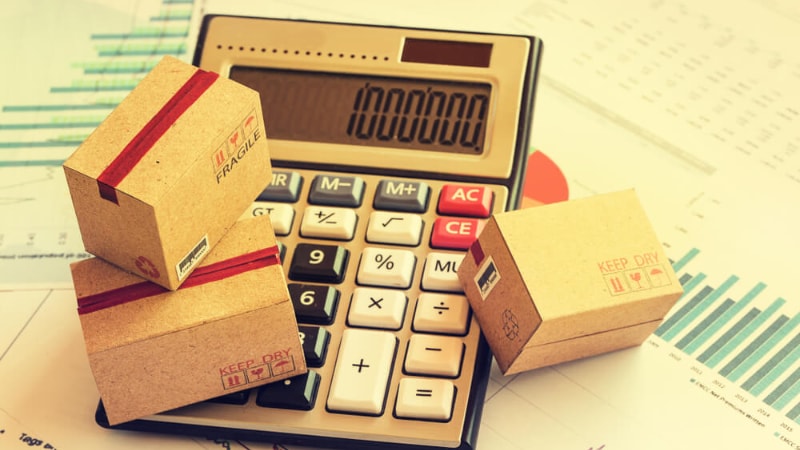
There is also an indirect cost associated with plastic bags. If customers see your brand as irresponsible and damaging to the environment because of your reliance on plastic, they will likely switch to your competitors.
As a general rule, plastic bags are generally ok for low-value products such as groceries. However, premium items should be sold in a premium paper or cloth bag.
3. Usability and Convenience
Next, let’s discuss the usability of paper and plastic bags in relation to your products. Soda bottles, ice cream tubs, milk cartons, and other heavy items are not suitable for paper bags. The bags will tear easily, resulting in a bad customer experience and damaging your business reputation.
So, if your business primarily deals in heavier products, it’s best to have a plastic or cloth bag option.
4. Customization Options
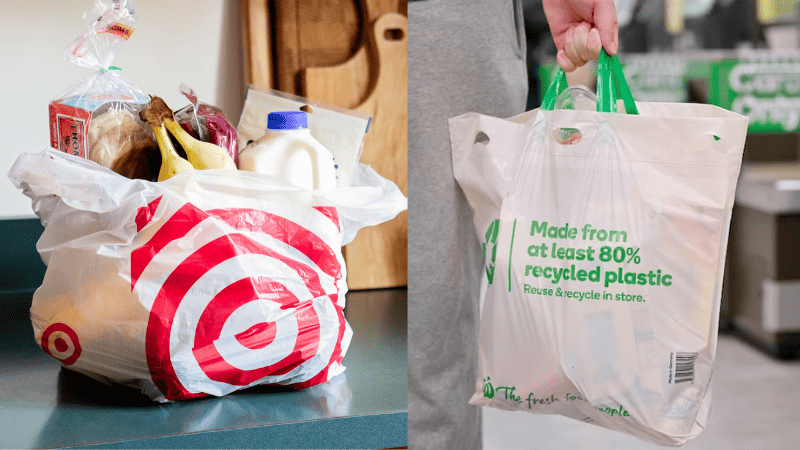
Both paper and plastic bags are easy to customize. You can print full-color logos and designs on them for minimal additional cost.
Although paper bags are more customizable, they can also be bright and colorful, something that cannot be achieved with plastic bags. Paper is also available in matte and glossy finishes, and thick paper can even be embossed.
5. Reducing Your Carbon Footprint
As a business owner, your choice of shopping bags reflects your commitment to environmental safety. Implementing a bring your own reusable bag policy will help offset your carbon footprint. However, it will create a negative buying experience for the customer.
The best option is to stock two options and offer customers the choice between paper and plastic bags.
6. Regulations and Taxes
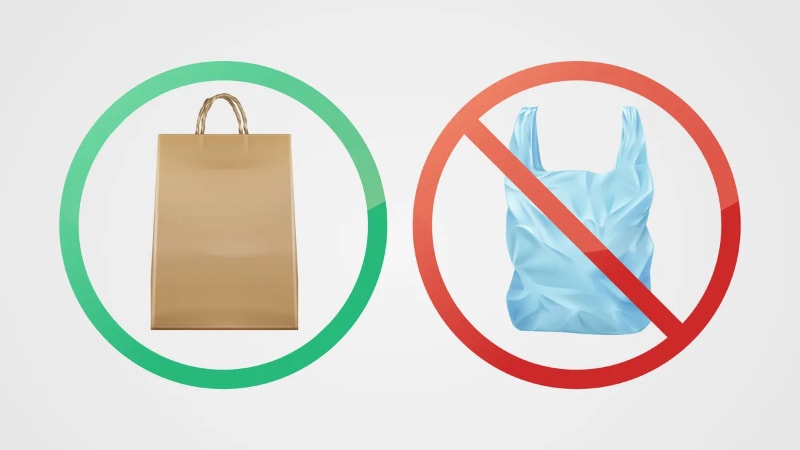
In recent years, plastic bags have been scrutinized more closely. As of 2024, almost every major country in the world has implemented a full or partial ban on plastic bags. Businesses should now avoid plastic bags to comply with various regional laws and regulations.
Many European countries have taken a different approach to dissuading single-use plastic bags. Countries like Germany, Spain, and Portugal have implemented taxes on unrecycled plastic packaging.
Frequently Asked Questions (FAQ)
Are Paper Bags More Eco-Friendly Than Plastic Bags?
Paper bags are more eco-friendly if they have been produced using ethical manufacturing practices.
What’s the Most Sustainable Option for Shopping Bags?
Reusable shopping bags are the best option for consumers, provided they are used regularly.
Can Plastic Bags Be Recycled Effectively?
Yes, plastic bags are made from polyethylene, which can be recycled up to 10 times.
How Can Businesses Transition to Eco-Friendly Alternatives?
The easiest way to transition to an eco-friendly business model is to reduce your plastic use. Buy paper and cardboard-based packaging from ethical suppliers.
Conclusion
Paper is by far the better option as it is safe for humans, wildlife, and the environment. Since paper is made from trees, ethical harvesting of wood is key. Aside from the environmental concerns, the aesthetics of paper bags are generally superior to plastic ones.
Paper bags have more customization options and can even facilitate gold or silver printing. The higher cost of paper bags might dissuade some businesses, but their value is undeniable.
Get the Best Quality Packaging at Packoi!
Are you on the search for custom packaging solutions and printed products? Packoi’s cutting-edge packaging solutions are a testament to our 25 years of experience in the industry. Get in touch.


